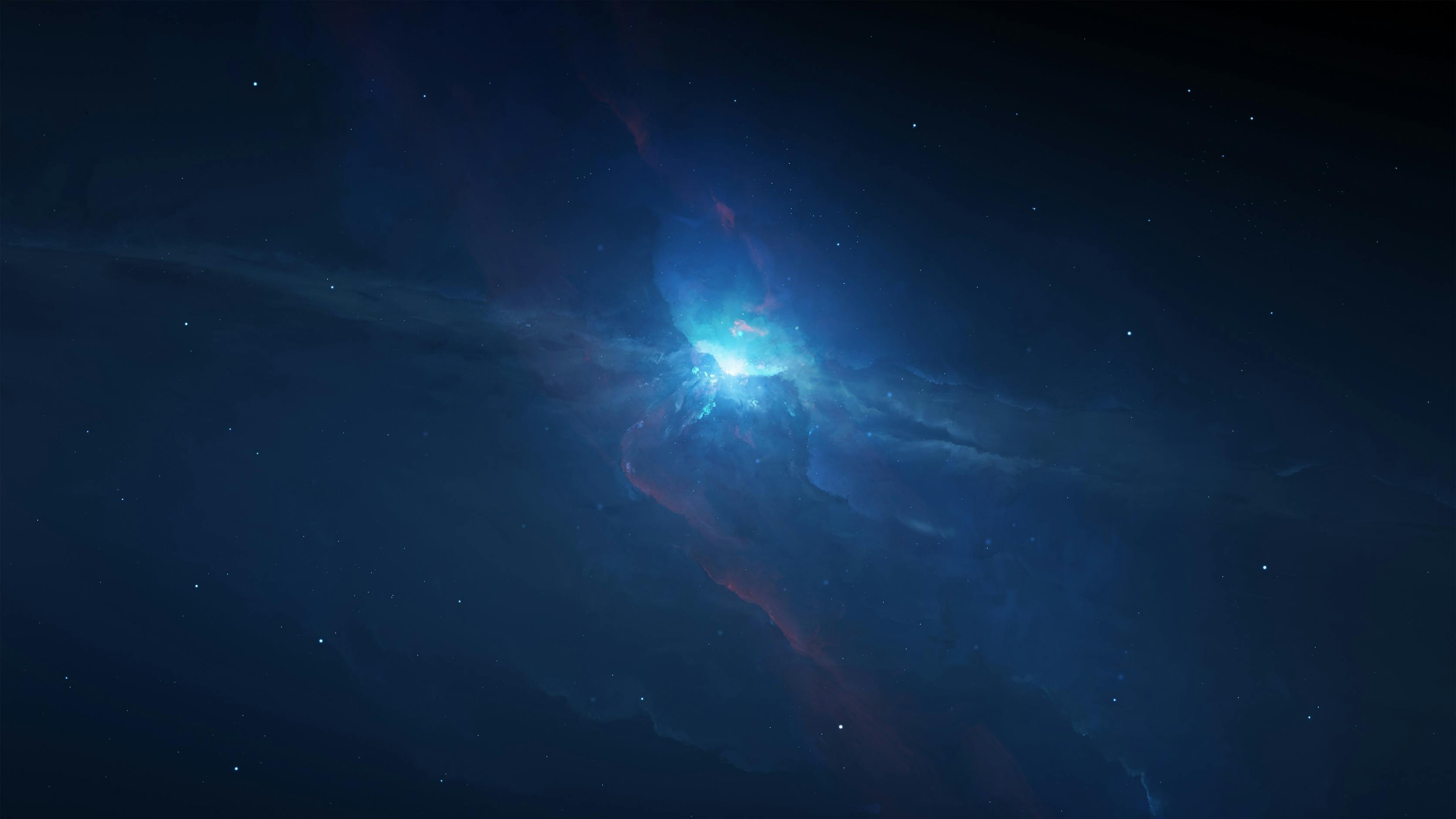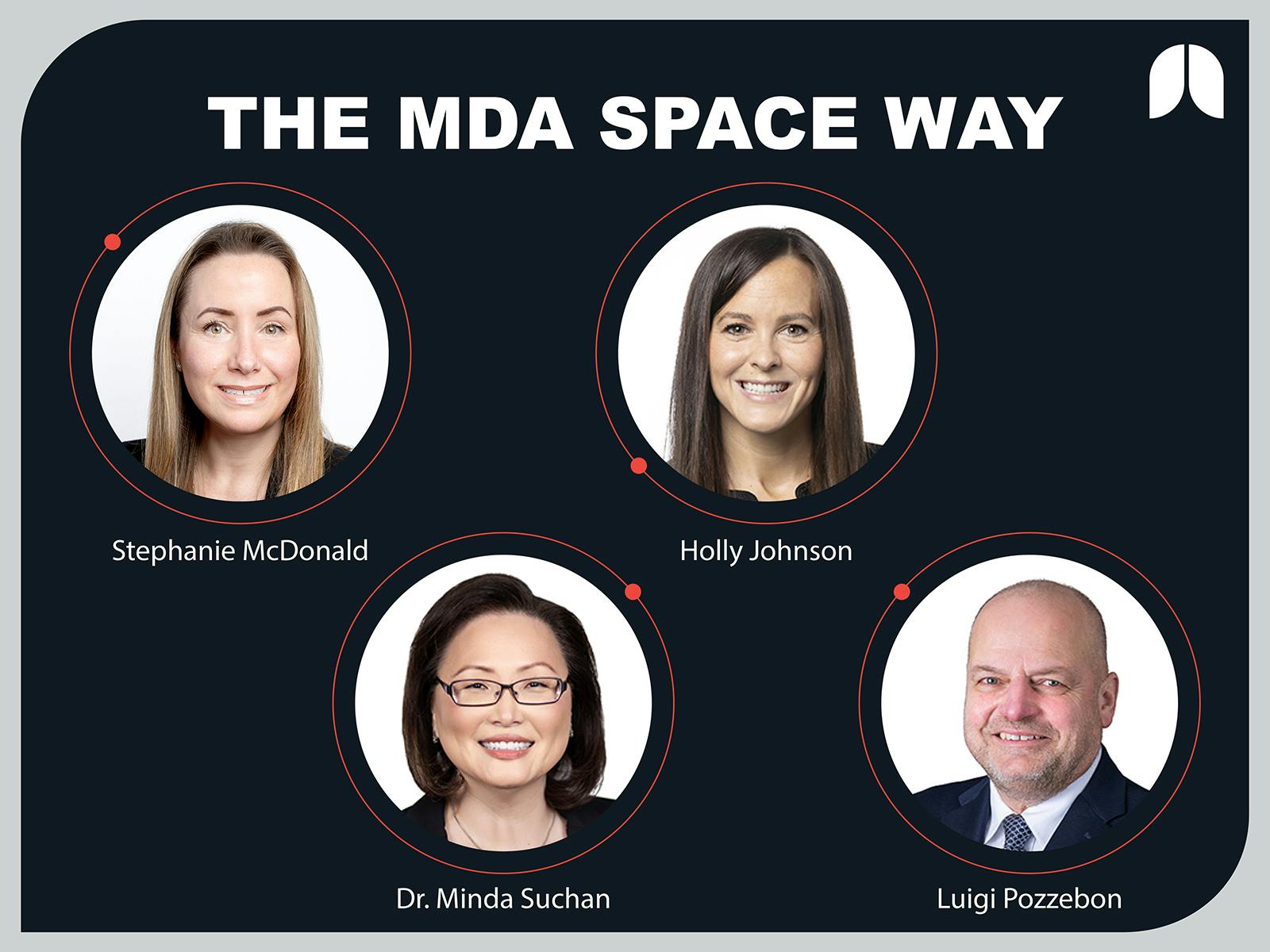
Home > Insights > THE MDA SPACE WAY – OUR SUPERPOWER
By MDA Space - June 13, 2024
THE MDA SPACE WAY – OUR SUPERPOWER

MDA Space leaders talk about how our culture and approach to solving problems gives us a real competitive advantage
At MDA Space, our superpower is the defining approach we take to working with customers and each other. No matter the task or problem that comes our way, we collaborate to find the best solutions by fusing our know-how, ingenuity and creativity to deliver mission-ready solutions. Paired with our technical excellence, we call this approach “the MDA Space Way.”
We asked some of our executive leaders for their thoughts on how our culture and approach creates better business outcomes for our customers.
· Stephanie McDonald, Chief People, Culture and Transformation Officer
· Dr. Minda Suchan, Vice President, Geointelligence
· Holly Johnson, Vice President, Robotics & Space Operations
· Luigi Pozzebon, Vice President, Satellite Systems
What is the MDA Space Way?
HOLLY: The MDA Space Way is applying everything we know to solve a customer's problem – across all domains of expertise. We are in the business of throwing everything we have at the problem to serve our customers, not just taking something off the shelf and pushing it on them.
STEPHANIE: The MDA Space Way isn’t just about bringing technical expertise together to solve problems, it’s about fostering an inclusive environment where we champion diversity of thought and identity. All ideas are on the table. In 2023, we added almost 900 employees who are now bringing their ideas, energy and expertise to deliver for our customers.
LUIGI: It begins by listening to what the customer has to say, identifying their problem, and relentlessly trying to help them find a solution. We’re interested in working with our customers to deliver tailored solutions that they actually need. This approach is a huge differentiator for us. It creates loyalty to our company, and it builds genuine trust between the customer and our people. All of that, in turn, leads to increased customer advocacy which helps to drive new business and revenue growth.
Can you provide some examples of the MDA Space Way in action?
STEPHANIE: One of the operational leaders in our satellite business in Montreal told me that a key inspiration for the latest design iteration of a satellite antenna came to him while he was watching a movie. This movie had nothing to do with space, antennas, or our business at all – but his connection to our work kept the door open in his mind for ideas from unexpected places. That idea then became the newest improvement to the satellite model.
This kind of innovation comes from our team’s constant drive to find the best solution for customers – and the capacity our organization has allotted to encourage innovation at every turn. We don't just sell products; we genuinely see our customers as partners.
MINDA: The MDA Space Way has played such a huge role in the trusted relationship we’ve developed with the Canadian government. We work closely with the Canadian Space Agency, the Department of National Defence, the Department of Fisheries and Oceans, and multiple other government organizations – and we have open and ongoing conversations with each of them about how we can optimize or apply different configurations to extend the lifetime of assets.
One of the best stories I've heard about RADARSAT-2 is that most of the features that are active today were not part of the baseline plan at launch. In other words, assets we build for a certain purpose can evolve because we have the flexibility, adaptability, and solution expertise required to meet the evolving needs of our customers.
LUIGI: When we were pursuing a constellation program a few years ago, someone at one of the largest tech companies in the world characterized MDA Space as “smaller than the competition, but a scrappy gang with a determined spirit.” I took all of that as a huge compliment, because we really are a scrappy group, and we’re relentless in putting the customer’s mission first and finding a solution that works for them.
What kind of mindset does a person need to embody the MDA Space Way?
MINDA: There's a lot of passion, enthusiasm, and commitment to both our customers and the space mission. Our people genuinely love the idea of space and think it's exciting. Plus, the very nature of the work we do is extremely hard and so we tend to attract people who like to solve extremely hard problems. I feel incredibly fortunate to work with this group of highly intelligent and passionate people.
LUIGI: It starts with having a passion for space and continues by striving for excellence, taking ownership, and always delivering on commitments. I joined this company over 30 years ago for that very reason – I had a passion for space. And I have stayed here ever since because I simply don’t want to go anywhere else. There’s no other company on Earth that could provide a person with the same experience as working at MDA Space.
HOLLY: Open-mindedness. Our team is extremely knowledgeable and has superior technical skills and expertise, but all of that is only part of the equation. Being open-minded when engaging with customers means making a deliberate effort to put ourselves in their shoes and understand the problems they face. It means taking their problem away and thinking creatively to solve it.
What role does culture play in the MDA Space Way, and in the success of the MDA Space business?
LUIGI: I believe we’re winning so many new satellite contracts right now, in large part, because of our culture. We have the right products at the right time and at the right price, but more importantly we have talented people who are passionate about creating those products and delivering them to the customer. We're often characterized as having the efficiency of a new space company and the track record and credibility of a veteran space company. That’s a really great way to be known in the space market.
HOLLY: Senior leadership encourages all levels of our organization to challenge the status quo and to challenge ourselves to find better solutions. Each opportunity can be transformed into something bigger, so don’t be afraid to safely push boundaries and think big. I think that’s such a big part of why our customers love working with us.
STEPHANIE: It’s in our DNA to find solutions, and the culture within the company allows for people at all levels to collaborate – which is a big part of our competitive advantage. We’re solving some of the world's toughest technical and scientific challenges and in order to be successful, brilliant minds must work together as a team.
MINDA: Given the technical nature of our work, it can sometimes be difficult for customers to articulate exactly what their needs are – which means that taking time to really understand their larger goal is critical. We always strive to engage with our customers by speaking a common language, sincerely listening to their perspective, then leveraging our business acumen and technical expertise to create real value. The ability of our people to walk these three roads is what has made us successful in the market.
Tell readers about some of the big milestones in 2023. What stood out to you?
LUIGI: It was a huge year in Satellite Systems – we reached record levels for orders, backlog, revenue, and operating income. We were awarded the Lightspeed constellation from Telesat for $2.1 billion and received authorization to proceed on a third constellation for an undisclosed customer. We've also received multiple awards for different space products from the space defense agency sector and other prime contractors. But what I'm really excited about is our cumulative five-year pipeline of future opportunities at Satellite Systems which exceeds $10 billion today.
STEPHANIE: I am consistently impressed by our teams – they work so hard to deliver innovative solutions for our customers and I can see and feel that passion across the entire organization. People like to be on a winning team – and it shows. Whether it’s the recognition for women in executive leadership or the recent Telesat contract award, it’s amazing to see so much momentum building in both the external environment and among our employees.
HOLLY: I’m proud of how our amazing – and growing! – team exceeded all our business performance targets for the year. Thanks to the growth of the Canadarm3 program and the high volume of commercial pursuits we're working on, we officially surpassed 1,000 people for the first time within the Robotics & Space Operations business unit.
On key technical milestones, we received the first production contract for Canadarm3 for robotic interfaces, and Canadarm3 also successfully passed the system definition review. We delivered the first commercial robotic interface to our partner and customer Axiom Space for their space station and we also continued to advance the development of our commercial robotics product suite, MDA SKYMAKER™.
MINDA: The most exciting part of my job in 2023 was advancing work on our new constellation, MDA CHORUS™, which provides continuity for our RADARSAT-2 mission. We are well past the half-way point, and we're now entering the home stretch. We are through the design process and entering the build phase for the satellite.
We also continued progress with the Canadian government on key space missions. Most notably, the Canadian Space Agency announced RADARSAT+, a program investment of more than $1 billion to fund a replacement for the RADARSAT Constellation Mission – which we originally built and currently operate for the Canadian government. It’s been exciting to see the extent of their commitment to maintaining this capability and this movement in the right direction.
What excites you about the outlook for MDA Space in 2024?
HOLLY: This year, we are pivoting to a product-based solution set in MDA SKYMAKER™ – a product line that takes all the knowledge, intellectual property, and scar tissue we've developed over the past 40 years to build reusable elements that can be clicked together in an efficient way – without designing a bespoke solution from scratch.
MINDA: MDA CHORUS™ is job one. We’re working every day to progress toward our launch date in Q4 2025.
LUIGI: I’m a firm believer that we need get the culture right as we move from being a business area that works on smaller, artisanal projects into a team that delivers high-volume production as a prime on major programs. That means a digital transformation of our factory floor. Delivering satellites at our level of production will require a finely tuned supply chain – and that is something we will continue to build out in the year ahead.
How do you see MDA Space in terms of its trajectory in the coming years?
HOLLY: We have so much momentum both internally and externally right now. The encouragement from our CEO and entire leadership team to think big, chase opportunities, and leverage multiple capabilities across the business to deliver solutions that we've never dreamed before is creating so much excitement and energy.
STEPHANIE: Many people have called MDA Space the 55-year-old start-up. Over the past 55 years, we’ve gone through many different iterations, but we’ve now found our footing as a pure play space company. We're not the same company we were five years ago, or even two years ago, and there are still some things we're building for the first time. But we have a strong foundation of support systems that we continue to build on as we grow and scale. We’re on a journey to be a globally successful organization – and we have no plans of slowing down.